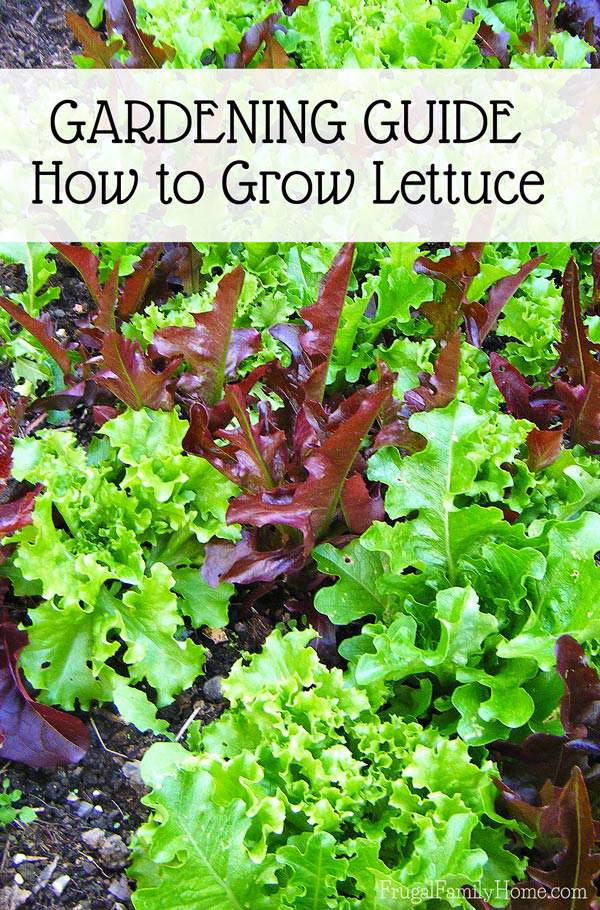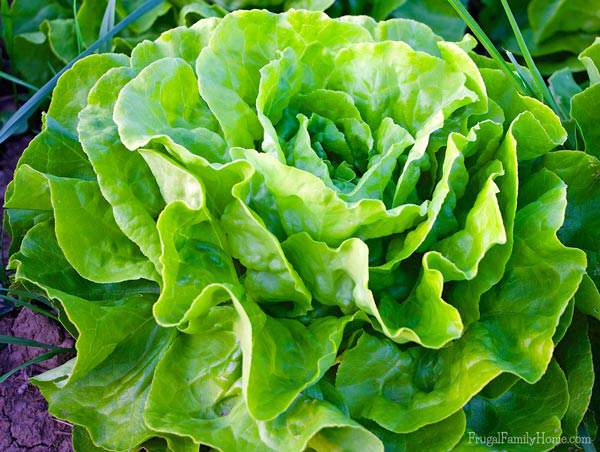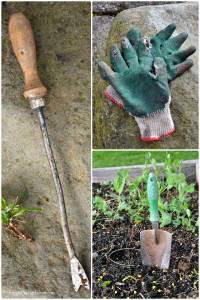Garden Guide, How to Grow Lettuce
Gardening season will soon be upon us, it’s time to start thinking about what you’ll be planting in your backyard garden. If you haven’t tried to grow lettuce before, this gardening guide for growing lettuce can help you start growing your own for yummy salads all season long.

Garden Guide for How to Grow Lettuce
There are a few things to think about when adding lettuce to your garden. Since lettuce is a cool weather plant it’s best to plant them in the spring or fall. You can also do succession planting to be able to have lettuce harvest all season long. To succession plant, you’ll want to plant a few seeds and then a week or two later plant a few more. This way your lettuce will be ready to harvest at different times, so you don’t have a huge harvest of all at once.
Just so you know some of the links below are my referral links. When you purchase through them I might make a little money at no extra cost to you. Thanks for your support in this way, you can read my disclosure policy for more information.
Types of Lettuce
Looseleaf Lettuce, this type is a quick growing and can be colorful. Looseleaf lettuce variety can grow from seed to tiny leaves to use in salads in 5 weeks and at 7 weeks is about full grown. With looseleaf lettuce, you can harvest a few leaves off the plant and the plant will regrow. I like to grow red and green oak leaf and red sails in this variety of lettuce.
Butterhead Lettuce is a loose head lettuce. It has delicious tender leaves. It does well in spring to early summer and also in cooler days of early fall. I like to grow French Four Season and Tom Thumb Butterhead lettuce.
Cos Lettuce is a Romaine type lettuce. This lettuce grows upright with a little stronger flavor than the looseleaf lettuce. It has a center rib for more crunch and does better at withstanding summer heat. Jericho is the one I like to grow of this variety.
Buttercrunch Lettuce has a more upright structure and is a cross between butterhead and romaine. It forms tight compact heads of lettuce. These tend to be more bolt resistant so better for growing during the summer months. I’ve grown the buttercrunch lettuce, it is a favorite of ours.
Heading Lettuce is a lettuce that as it grows it leaves roll up like a cabbage into a tight head. These are like the standard iceberg lettuce. They can withstand the summer heat without turning bitter. I’ve never given growing heading a lettuce a try before so I can’t recommend a variety to try. Here’s one I want to try, Crisphead Iceberg Lettuce.

When to Plant
Lettuce is a cool weather plant and does well in most areas when planted in the spring and fall. Lettuce seeds can be started indoors 4-6 weeks before the last spring frost. Lettuce seeds can be direct sown into the garden as soon as the soil can be worked. Lettuce usually grows well at temperatures between 45 and 65 degrees. Hotter weather tends to make lettuce bitter and it can bolt.
Where Plant Lettuce
Finding a good spot in the garden for lettuce is important. Since lettuce is a cooler weather plant they like some shade. It’s best to plant lettuce in an area that has part sun. I like to plant my lettuce around my tomatoes plants. The tomato plants give the lettuce a little shade. If you are limited on garden space, lettuce grows very well in containers too.
Give the lettuce a little room between plants, if in rows plant 4 inches apart for leaf varieties and 8-12 inches apart for head varieties. If you are using the square foot gardening method you should be able to plant 5 plants per square foot.
Soil conditions for Lettuce
Lettuce likes to be planted in a loamy soil that is fertile. Be sure to work in some compost or fertilizer before planting and then after transplanting the lettuce add a little fertilizer to the soil in about three weeks. I use Garden Tone in my garden.
Watering and Care
You’ll want to keep the lettuce soil moist but not soggy. Lettuce can wilt if the soil is too dry or the weather is too warm. If the soil is moist but the lettuce is wilting in the heat of the day, water the leaves to cool the plant down. If you need to weed around lettuce plants, be sure to hand weed. The lettuce roots are shallow and care needs to be taken when weeding around them.
Harvesting
There are a few ways to harvest lettuce. You can remove the larger outer leaves when you just need a few leaves of lettuce. Let the rest of the leaves remain and continue growing. If you want to harvest the whole head, instead of pulling it up cut it at the base leaving a few leaves and then water the stock right away. After a week or so you should see lettuce begin to regrow from the stock that was left. If you need the space for another plant. Cut off the head and then remove the stock and roots.
To store harvested lettuce place it in a loosely closed plastic bag and store in the refrigerator for up to 10 days. I’ve found that it store better without washing it. If you do wash it after harvest. Be sure to spin the lettuce dry before storing it. If lettuce is stored wet it can go bad. I find placing a napkin or paper towel in the bottom of the plastic bags helps to prevent the lettuce from sitting in any moisture. I like to use my salad spinner to get the lettuce leaves very dry. I really love this salad spinner since it comes apart easily, making it easy to clean.

Pests
Be on the lookout for aphids and earwigs on lettuce. They like to get down into the plant and snack on it. For aphids, I will spray the plant with a stiff spray to dislodge the aphids. We also purchase lady bugs each year to release into the yard to help control aphids on plants. Earwigs can be picked off the plant. When I harvest lettuce I always turn the head upside down and give it a shake to get rid of any earwigs that might be in the lettuce.
Companion Plants
Planting chives or garlic near lettuce or between the rows helps to keep aphids away from the lettuce. It works as a barrier against them.
That’s the basics you need to know on how to grow lettuce in your backyard garden. I love to plant a few varieties of lettuce each year so we can have yummy salads and lettuce for sandwiches all season long.
What type of lettuce do you grow in your garden?
Check out the list of the garden tools I can’t live without,
Find More Gardening Guides by following this link.
Get the Companion Plants List
When you join the gardening email list, you'll not only get gardening tips sent to your inbox, you'll also get the companion plants list too.



This is such a great guide, Shelly! Thank you for sharing it. Thanks for the pest control tips, too. How many ladybugs do you guys typically buy to control the aphids?
If you buy organic bananas eat them and then cut up the banana peels and dry them in a dehydrator and then grind them up in a coffee grinder you can take the banana peel powder and mix in with the soil, it works as a fertilizer and keeps away aphids.
I’ve never heard of dehydrating the banana peels and then adding the powder to the soil. I do put a banana peel in the hole when I plant my tomatoes and they are always bug free. I’ll have to try this tip for fertilizer. I wonder if it will work around my roses. They already have aphids this year.
I recently planted lettuce seeds (variety pack) and they popped up quickly…but something came along and ate the small leaves in a just a few days. I planted them in an above ground container. Any clue what might have eaten them? or how I can prevent that from happening again?
Lisa, it might be slugs. They can be very devasting to the garden. If it’s slugs you can use slug bait or try sprinkling crushed eggs shells around the plants. We battle with slugs every year.
We don’t have slugs here. There is a lot of wildlife in my area, so slugs and snails get eaten up by skunks, raccoons, etc… I’m suspecting its some kind of small bug or possibly earwigs…I found some organic pest control spray at Home Depot, I hope it works. *fingers crossed*